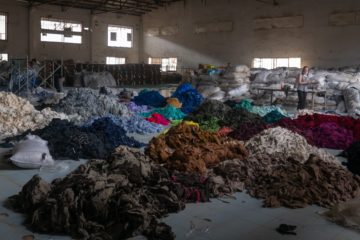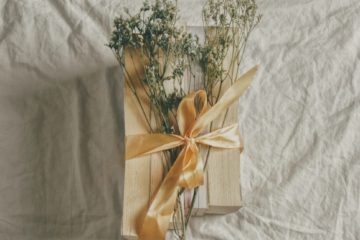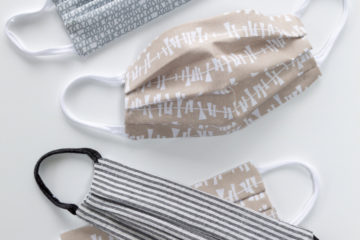The Weight of Our Clothes
It’s laundry day and once again, it happens: The missing sock. Now you have another lonely sock to add to the pile of outcast socks that lost their mate in the battle of the spin cycle. When your beloved sock doesn’t turn up you make a choice: keep the unpaired sock or throw it away.
The choice to throw away your sock has some unfortunate consequences. Now let’s be clear, it’s not because you, in particular, threw away your abandoned sock. It’s because you, your neighbor and millions of other Americans had the same idea. The result? About 5.2% of U.S. municipal solid waste is post-consumer textile waste (PCTW). That’s equivalent to 21 billion pounds of textiles hanging out in the landfill. I.e., a lot of socks.
The Council for Textile Recycling estimates 3.8 billion pounds of textiles are recovered each year through donation or recycling programs. Across the U.S. you’ll notice donation bins requesting used textiles, in the form of clothing and footwear, for a variety of charitable causes. There are also great non-profits such as NYC’s very own, Housing Works, that accept clothing donations to help fund critical program operations.
The concept of recycling an old sweater (or a bunch of unpaired socks) so someone can use it later, especially through charitable giving, isn’t new. Residential textile waste is much easier to measure, quantify and proactively do something about as an individual. However, commercial textile waste is a much larger and more complex issue.
NYC based non-profit FABSCRAP identified an issue in commercial textile recycling for the city’s prominent fashion industry. The issue? Scale. Per the FABSCRAP website:
Let’s say one design office creates 20 boxes of unwanted fabric. This much material, of varied size and content, would quickly overwhelm arts organizations (there’s only so much you can use in crafts!). However, industrial fabric recyclers require a minimum volume closer to 20,000 boxes (which would be impossible for the design office to store).
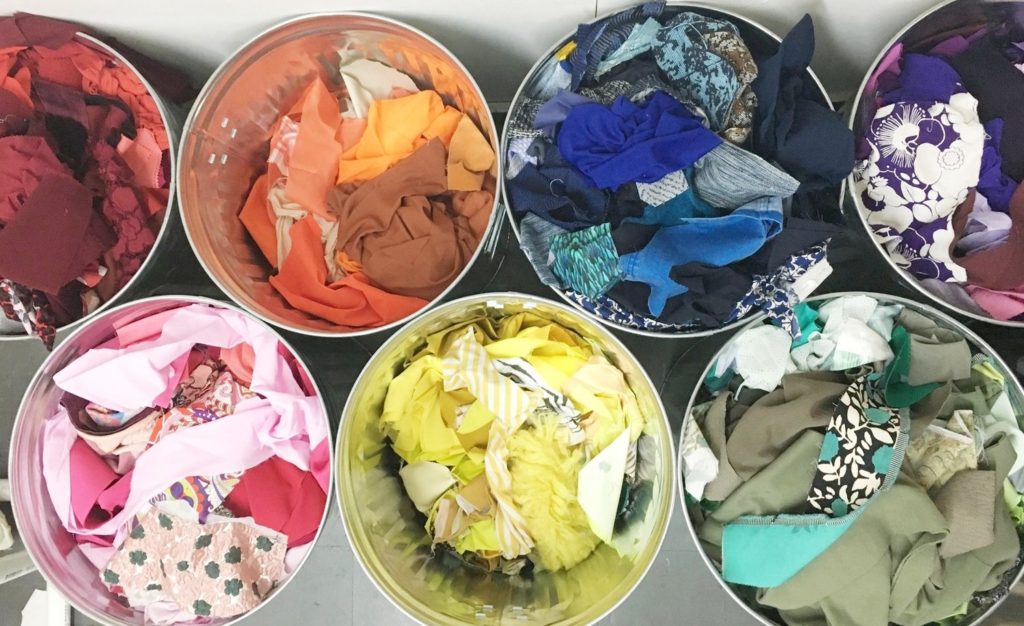
Photo from fabscrap.org
The FABSCRAP solution is to remove the issue of scale. The organization is a turnkey operation that handles the pickup and processing of commercial textile waste focusing on recycling and reusing material as part of their business model. Proprietary material and scraps are shredded and used later for such things as insulation, carpet padding and furniture lining. Collected material that is not proprietary (~40% of fabric received) is later resold at a discounted price to the local community.
FABSCRAP is one of many organizations that view our supply chain from a critical perspective and seek to reduce our consumer inefficiencies in an innovative way. To learn more about this organization please visit their website at fabscrap.org .
Article courtesy of Terra Verd .

Photo: Stephanie Gupana
With over a decade of experience in engineering, technical program management, consulting, and strategic planning, New York based Stephanie Gupana and her team, partner with organizations to focus on improved efficiency in their long-term energy and performance goals. A conscious team that understands the global impact of businesses and consumers, Terra Verd strives to be a catalyst for change in an increasingly complex environment.
Editor’s Note:
Since first being introduced to founder of FABSCRAP, Jessica Schreiber‘s story on Project Runway Fashion Startup! I’ve been excited by the idea of a FABSCRAP initiative being taken up here in Australia (collab anyone? I wish!). With the amount of waste created by industrial garment manufacturing it is such a win-win for the industry and the parties involved. FABSCRAP currently collects roughly 2,000 lbs of material (just over 900kg) from fashion businesses in NYC each week, and around 40% of that fabric is recovered for sale with the remainder being recycled.
Congratulations to the FABSCRAP team and to Stephanie Gupana for highlighting this important initiative.
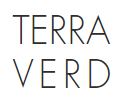
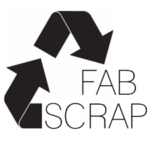
What do you think of the potential for an Australian fabric recovery NGO or this article? Please let us know in the comments below.
Sophie Newman | FOUNDER & EDITOR – Ethical Fashion Review™
